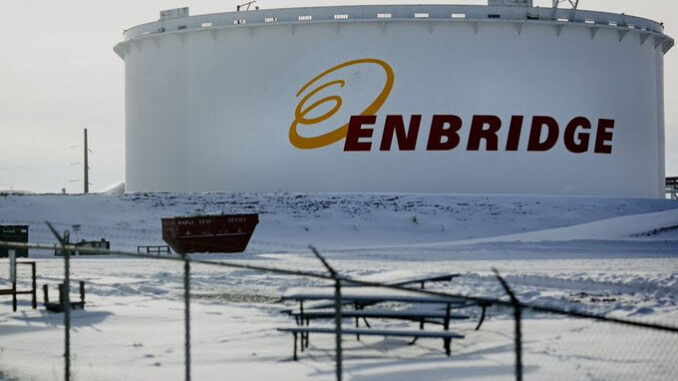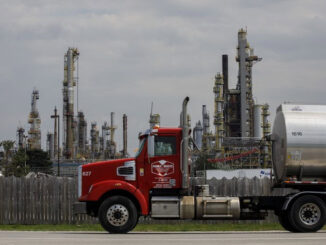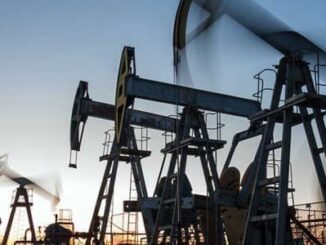
In a significant move for North America’s energy landscape, Enbridge Inc. has announced the final investment decision on its Mainline Optimization Phase 1 (MLO1) project, greenlighting a $1.4 billion expansion to enhance the flow of Canadian crude oil to key U.S. refining markets.
This update comes as Canadian oil production continues to climb, reaching a record 5.1 million barrels per day (bpd) last year, with forecasts predicting an additional 500,000 to 600,000 bpd of growth by the end of the decade.
Details of the Expansion
The MLO1 project focuses on optimizing Enbridge’s existing infrastructure to meet growing demand for Canadian heavy crude. Specifically, it will add 150,000 bpd of capacity to the Mainline system—the largest crude transport network in North America, which already shipped a record average of 3.1 million bpd in the third quarter.
This will be achieved through upstream optimizations and terminal upgrades.
Additionally, the project includes a 100,000 bpd expansion of the Flanagan South Pipeline (FSP), which connects Pontiac, Illinois, to Cushing, Oklahoma, and further links to the Seaway Pipeline for deliveries to the U.S. Gulf Coast.
The FSP enhancements involve adding new pump stations and terminal infrastructure, ensuring more consistent throughput.
The total capacity boost from MLO1 amounts to 250,000 bpd, with the new capabilities expected to come online in 2027.
Enbridge has emphasized that this expansion is capital-efficient, leveraging existing assets to provide timely egress for Canadian producers. The FSP portion is backed by long-term take-or-pay contracts for full-path service from Edmonton, Alberta, to Houston, Texas, with many customers extending their commitments through the next decade.
This announcement builds on Enbridge’s broader strategy, including plans to gauge interest early next year for a potential Phase 2 expansion that could add another 250,000 bpd to the Mainline network.
Together with competitors like the expanded Trans Mountain pipeline, these developments are poised to accommodate forecasted supply growth while prioritizing U.S. markets.
Increased Oil Flows to U.S. Gulf Coast Refineries
The expansion directly targets increased deliveries of Canadian heavy crude to the U.S. Midwest (PADD II) and Gulf Coast (PADD III) refining hubs.
The U.S. Gulf Coast, home to the world’s largest refining complex, is particularly well-suited for processing heavy oil from Canada’s oil sands. Enbridge executives have highlighted the geopolitical and economic benefits of strengthening ties with the U.S., noting that 90% of Canada’s oil exports already head south.
With the additional 250,000 bpd capacity, this project could significantly ramp up supplies to Gulf Coast refineries, enhancing their access to reliable, affordable feedstock. This is especially timely as U.S. refiners seek to optimize operations amid global supply shifts. For context, the Mainline and FSP expansions will help alleviate potential bottlenecks in the Western Canadian Sedimentary Basin, where production has historically outpaced pipeline capacity.
Implications for Investors
For investors, Enbridge’s MLO1 project represents a strategic bet on sustained growth in North American energy demand, underpinned by fee-based revenues from long-term contracts.
The company’s focus on low-risk, capital-efficient expansions aligns with its diversified portfolio, which includes natural gas utilities and renewables, providing stability in a volatile sector. Market reactions to the announcement have been positive, with Enbridge shares showing resilience. On November 14, 2025—the day of the reveal—ENB stock traded between a low of $46.90 and a high of $47.84, closing at $47.10.
Analysts maintain a moderate buy rating, with a target price of $48.83, reflecting confidence in Enbridge’s growth trajectory.
The stock’s dividend yield stands at an attractive 5.5%, appealing to income-focused investors.
Broader implications include potential upside for Canadian oil producers, as improved egress could narrow price differentials for Western Canadian Select (WCS) crude, boosting their margins. However, investors should monitor regulatory environments and competing projects, such as Alberta’s exploration of new export routes to Asia.
Overall, this expansion reinforces Enbridge’s role as a key player in energy security, potentially driving long-term shareholder value through increased throughput and contractual stability.
As the energy sector evolves, Enbridge’s updates signal a commitment to bridging Canadian supply with U.S. demand, fostering economic ties across the border. Stay tuned to Energy News Beat for more insights on how these developments shape the global oil market.








